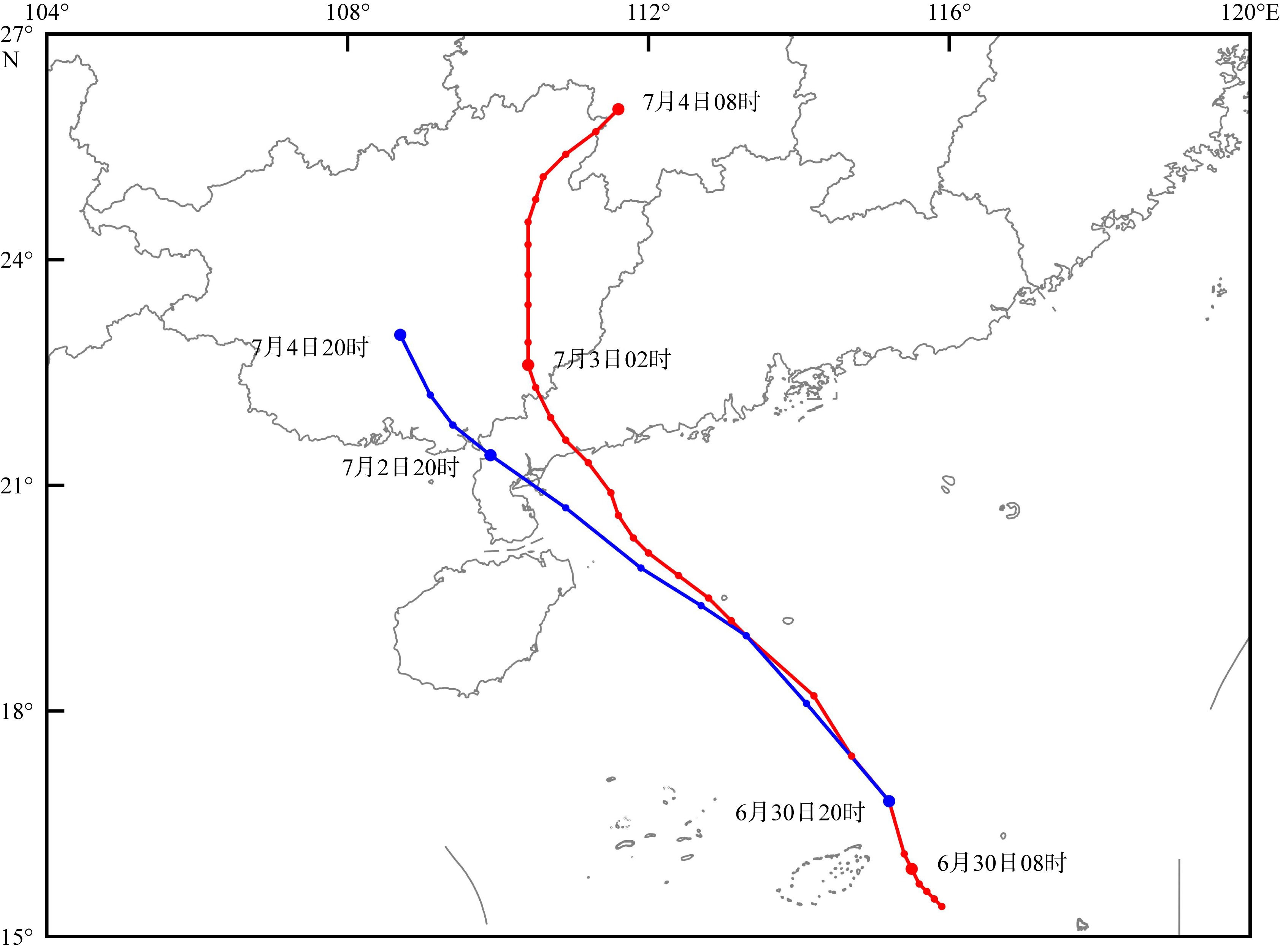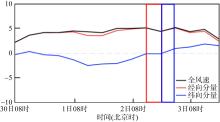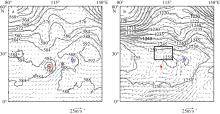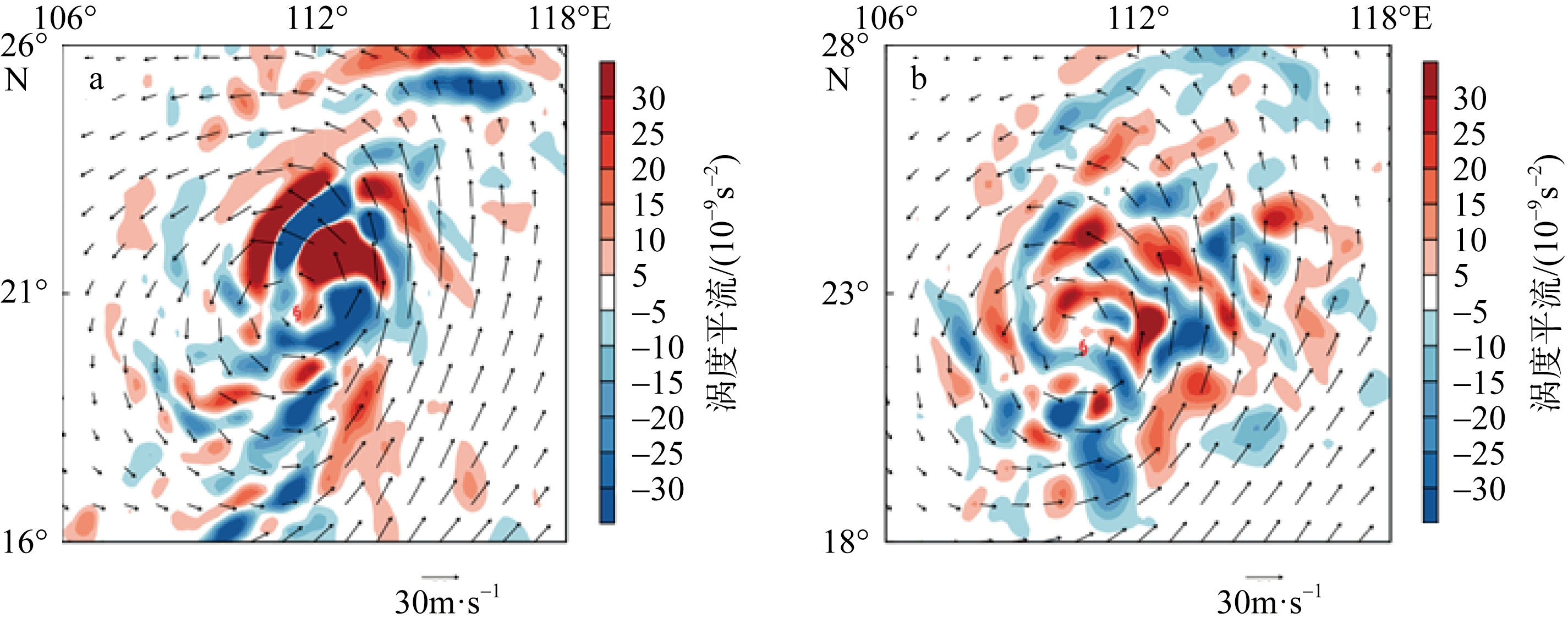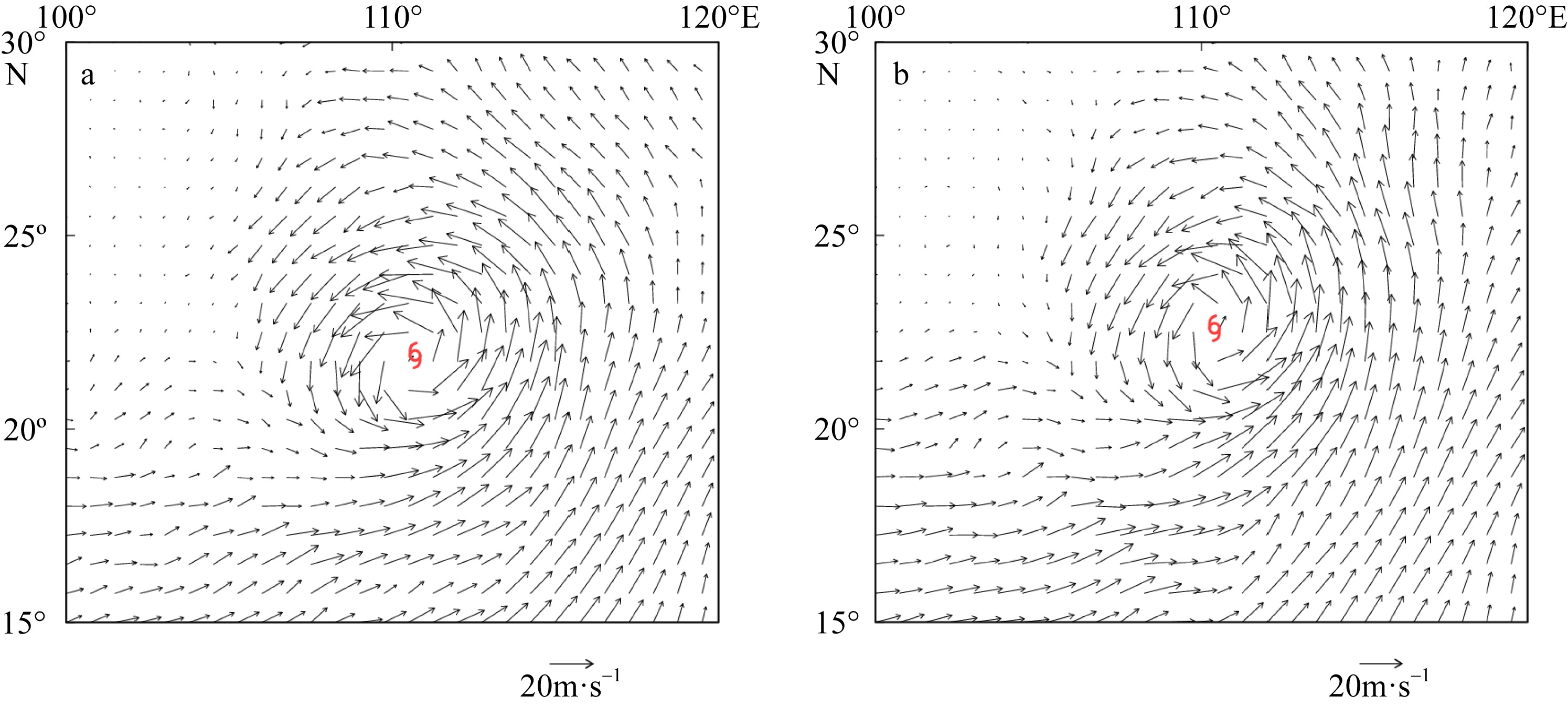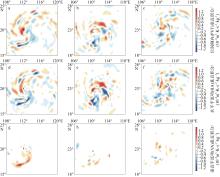| [1] |
毕鑫鑫, 陈光华, 周伟灿, 2018. 超强台风“天鹅”(2015)路径突变过程机理研究[J]. 大气科学, 42(1): 227-238.
|
|
BI XINXIN, CHEN GUANGHUA, ZHOU WEICAN, 2018. A mechanism study on the sudden track change of super typhoon Goni(2015)[J]. Chinese Journal of Atmospheric Sciences, 42(1): 227-238 (in Chinese with English abstract).
|
| [2] |
陈联寿, 徐祥德, 罗哲贤, 等, 2002. 热带气旋动力学引论[M]. 北京: 气象出版社: 222-227.
|
|
CHEN LIANSOU, XU XIANGDE, LUO ZHEXIAN, et al, 2002. Introduction to tropical cyclone dynamics[M]. Beijing: Meteorological Press: 222-227 (in Chinese).
|
| [3] |
陈蓉, 谭锐志, 林元弼, 1996. 热带气旋内部非对称积云对流对其移动的影响[J]. 大气科学, 20(2): 195-201.
|
|
CHEN RONG, TAN REIZHI, LIN YUANBI, 1996. The influence of the inner asymmetrical cumulus convection in tropical cyclones on their motion[J]. Scientia Atmospherica Sinica, 20(2): 195-201 (in Chinese with English abstract).
|
| [4] |
陈渭民, 2005. 卫星气象学[M]. 北京: 气象出版社: 343-344 (in Chinese).
|
| [5] |
《广西天气预报技术和方法》编写组, 2012. 广西天气预报技术和方法[M]. 北京: 气象出版社: 208-209 (in Chinese).
|
| [6] |
韩鼎妍, 李敏, 胡睿, 等, 2024. 秋季登陆广东热带气旋特征变化及机制分析[J]. 热带海洋学报, 43(1): 64-78.
|
|
HAN DINGYAN, LI MIN, HU RUI, et al, 2024. Variation and mechanisms of autumn tropical cyclones landed in Guangdong[J]. Journal of Tropical Oceanography, 43(1): 64-78 (in Chinese with English abstract).
|
| [7] |
姜丽萍, 夏冠聪, 尤红, 等, 2008. “珍珠” 台风强度及路径异常的分析[J]. 台湾海峡, 27(1): 124-128.
|
|
JIANG LIPING, XIA GUANCONG, YOU HONG, et al, 2008. Analysis on the abnormal intention and track of typhoon “Chanchu”[J]. Journal of Oceanography in Taiwan Strait, 27(1): 124-128 (in Chinese with English abstract).
|
| [8] |
金荣花, 高拴柱, 顾华, 等, 2006. 近31年登陆北上台风特征及其成因分析[J]. 气象, 32(7): 33-39.
|
|
JIN RONGHUA, GAO SHUANZHU, GU HUA, et al, 2006. An analysis on characteristics of landing and going northward typhoons and its causes during 1975—2005[J]. Meteorological Monthly, 32(7): 33-39 (in Chinese with English abstract).
|
| [9] |
李瑞芬, 袁月, 郭卫华, 等, 2021. 2018年台风“摩羯” 和“温比亚” 路径的影响因子分析[J]. 气象科技, 49(3): 427-436.
|
|
LI RUIFEN, YUAN YUE, GUO WEIHUA, et al, 2021. Factors influencing tracks of typhoons Yagi and Rumbia in 2018[J]. Meteorological Science and Technology, 49(3): 427-436 (in Chinese with English abstract).
|
| [10] |
李泽椿, 张玲, 钱奇峰, 等, 2020. 中央气象台台风预报业务的发展及思考[J]. 大气科学学报, 43(1): 10-19.
|
|
LI ZECHUN, ZHANG LING, QIAN QIFENG, et al, 2020. The development and consideration of typhoon forecast operation of Central Meteorological Center[J]. Transactions of Atmospheric Sciences, 43(1): 10-19 (in Chinese with English abstract).
|
| [11] |
刘爱鸣, 林毅, 吴幸毓, 2010. 台湾岛及邻近区域热带气旋异常路径特征分析[J]. 气象, 36(9): 29-35.
|
|
LIU AIMING, LIN YI, WU XINGYU, 2010. A statistical analysis of unusual track characteristics of tropical cyclones passed or close to Taiwan[J]. Meteorological Monthly, 36(9): 29-35 (in Chinese with English abstract).
|
| [12] |
刘开源, 戴竹君, 姜有山, 等, 2024. 台风“烟花” 缓慢移动的机理研究: 远距离双台风相互作用[J]. 气象科学, 44(2): 308-316.
|
|
LIU KAIYUAN, DAI ZHUJUN, JIANG YOUSHAN, et al, 2024. Numerical study on the mechanisms of slow-moving typhoon “In-fa” (2106): interaction of binary typhoons with a far distance[J]. Journal of the Meteorological Sciences, 44(2): 308-316 (in Chinese with English abstract).
|
| [13] |
钱传海, 端义宏, 麻素红, 等, 2012. 我国台风业务现状及其关键技术[J]. 气象科技进展, 2(5): 36-43.
|
|
QIAN CHUANHAI, DUAN YIHONG, MA SUHONG, et al, 2012. The current status and future development of China operational typhoon forecasting and its key technologies[J]. Advances in Meteorological Science and Technology, 2(5): 36-43 (in Chinese with English abstract).
|
| [14] |
史得道, 易笑园, 刘彬贤, 2014. 台风“达维”不对称结构特征分析[J]. 气象与环境学报, 30(3): 10-17.
|
|
SHI DEDAO, YI XIAOYUAN, LIU BINXIAN, 2014. Analysis of the asymmetric structure of typhoon Damrey[J]. Journal of Meteorology and Environment, 30(3): 10-17 (in Chinese with English abstract).
|
| [15] |
束艾青, 许冬梅, 李泓, 等, 2022. FY-3D卫星MWHS-2辐射率资料直接同化对台风“米娜”预报的影响[J]. 热带海洋学报, 41(5): 17-28.
doi: 10.11978/2021160
|
|
SHU AIQING, XU DONGMEI, LI HONG, et al, 2022. Assimilating MWHS-2 radiance of FY-3D satellite and its influence on the forecast of Typhoon Mitag[J]. Journal of Tropical Oceanography, 41(5): 17-28 (in Chinese with English abstract).
|
| [16] |
孙泽铭, 韩树宗, 王明杰, 等, 2024. 不同路径台风对中国近海海温的影响特征统计分析[J]. 热带海洋学报, 43(5): 17-31.
|
|
SUN ZEMING, HAN SHUZONG, WANG MINGJIE, et al, 2024. Statistical study on the influence of typhoon with different path on the temperature of coastal waters of China[J]. Journal of Tropical Oceanography, 43(5): 17-31 (in Chinese with English abstract).
|
| [17] |
王斌, RUSSELLL E, 王玉清, 等, 1998. 热带气旋运动的动力学研究进展[J]. 大气科学, 22(4): 535-547.
|
|
WANG BIN, RUSSELLL, ELSBERRY, WANG YUQING, et al, 1998. Dynamics in tropical cyclone motion: a review[J]. Scientia Atmospherica Sinica, 22(4): 535-547 (in Chinese with English abstract)
|
| [18] |
王海平, 2023. 高空冷涡对台风烟花(2106)路径的影响[J]. 应用气象学报, 34(5): 586-597.
|
|
WANG HAIPING, 2023. Impacts of upper tropospheric cold low on the track of typhoon In-fa in 2021[J]. Journal of Applied Meteorological Science, 34(5): 586-597 (in Chinese with English abstract).
|
| [19] |
王敏, 尹义星, 陈晓旸, 等, 2020. 异常北折台风“洛坦”与异常西折台风“奥玛”路径的对比及预报[J]. 热带海洋学报, 39(1): 53-65.
doi: 10.11978/2019042
|
|
WANG MIN, YIN YIXING, CHEN XIAOYANG, et al, 2020. Comparison and prediction of unusual-turning tracks of typhoons Nock-ten and Orma[J]. Journal of Tropical Oceanography, 39(1): 53-65 (in Chinese with English abstract).
doi: 10.11978/2019042
|
| [20] |
王新伟, 罗哲贤, 马革兰, 等, 2015. 热带气旋Meranti(2010)异常路径的成因分析[J]. 大气科学学报, 38(1): 37-45.
|
|
WANG XINWEI, LUO ZHEXIAN, MA GELAN, et al, 2015. Cause analysis on abnormal track of tropical cyclone Meranti(2010)[J]. Transactions of Atmospheric Sciences, 38(1): 37-45 (in Chinese with English abstract).
|
| [21] |
温典, 李英, 魏娜, 等, 2019. 高空冷涡影响台风Meranti(1010)北翘路径的集合预报分析[J]. 大气科学, 43(4): 730-740.
|
|
WEN DIAN, LI YING, WEI NA, et al, 2019. An ensemble analysis on abrupt northward turning of typhoon Meranti (1010) under the influence of an upper-tropospheric cold low[J]. Chinese Journal of Atmospheric Sciences, 43(4): 730-740 (in Chinese with English abstract).
|
| [22] |
文永仁, 戴高菊, 龚月婷, 等, 2017. 我国台风路径突变研究进展[J]. 气象科技, 45(6): 1027-1035.
|
|
WEN YONGREN, DAI GAOJU, GONG YUETING, et al, 2017. Advances in research on sudden track change of typhoons in China[J]. Meteorological Science and Technology, 45(6): 1027-1035 (in Chinese with English abstract).
|
| [23] |
吴胜蓝, 漆梁波, 邹兰军, 2023. 台风灿都路径预报中的非绝热加热因子分析[J]. 气象, 49(7): 805-818.
|
|
WU SHENGLAN, QI LIANGBO, ZOU LANJUN, 2023. Analysis of diabatic heating factor in track forecast of typhoon Chanthu[J]. Meteorological Monthly, 49(7): 805-818 (in Chinese with English abstract).
|
| [24] |
许映龙, 张玲, 高拴柱, 2010. 我国台风预报业务的现状及思考[J]. 气象, 36(7): 43-49.
|
|
XU YINGLONG, ZHANG LING, GAO SHUANZHU, 2010. The advances and discussions on China operational typhoon forecasting[J]. Meteorological Monthly, 36(7): 43-49 (in Chinese with English abstract).
|
| [25] |
袁敏, 平凡, 李国平, 2018. 位涡倾向在Muifa台风路径转折中的应用[J]. 大气科学, 42(2): 281-291.
|
|
YUAN MIN, PING FAN, LI GUOPING, 2018. Application of potential vorticity tendency in track recurvature study of typhoon Muifa[J]. Chinese Journal of Atmospheric Sciences, 42(2): 281-291 (in Chinese with English abstract).
|
| [26] |
于慧珍, 马艳, 韩旭卿, 等, 2022. 台风“摩羯” 路径转折预报和诊断分析[J]. 干旱气象, 40(6): 1014-1023.
doi: 10.11755/j.issn.1006-7639(2022)-06-1014
|
|
YU HUIZHEN, MA YAN, HAN XUQING, et al, 2022. Forecast and diagnosis analysis of the turning of Typhoon Yagi track[J]. Journal of Arid Meteorology, 40(6): 1014-1023 (in Chinese with English abstract).
|
| [27] |
周玉淑, 冉令坤, 2010. 平流涡度方程及其在2006年Bilis台风分析中的应用[J]. 物理学报, 59(2): 1366-1377.
|
|
ZHOU YUSHU, RAN LINGKUN, 2010. Advective vorticity equation and its application to the vorticity variation of typhoon Bilis in 2006[J]. Acta Physica Sinica, 59(2): 1366-1377 (in Chinese with English abstract).
|
| [28] |
DONG KEQIN, NEUMANN C J, 1983. On the relative motion of binary tropical cyclones[J]. Monthly Weather Review, 111(5): 945-953.
|
| [29] |
LUO ZHEXIAN, DAVIDSON N E, PING FAN, et al, 2011. Multiple-scale interactions affecting tropical cyclone track changes[J]. Advances in Mechanical Engineering, 3: 782590.
|
| [30] |
WU LIGUANG, WANG BIN, 2000. A potential vorticity tendency diagnostic approach for tropical cyclone motion[J]. Monthly Weather Review, 128(6): 1899-1911.
|
 ), ZHAI Liping(
), ZHAI Liping( ), QIN Hao, HUANG Qing, QI Liyan
), QIN Hao, HUANG Qing, QI Liyan



